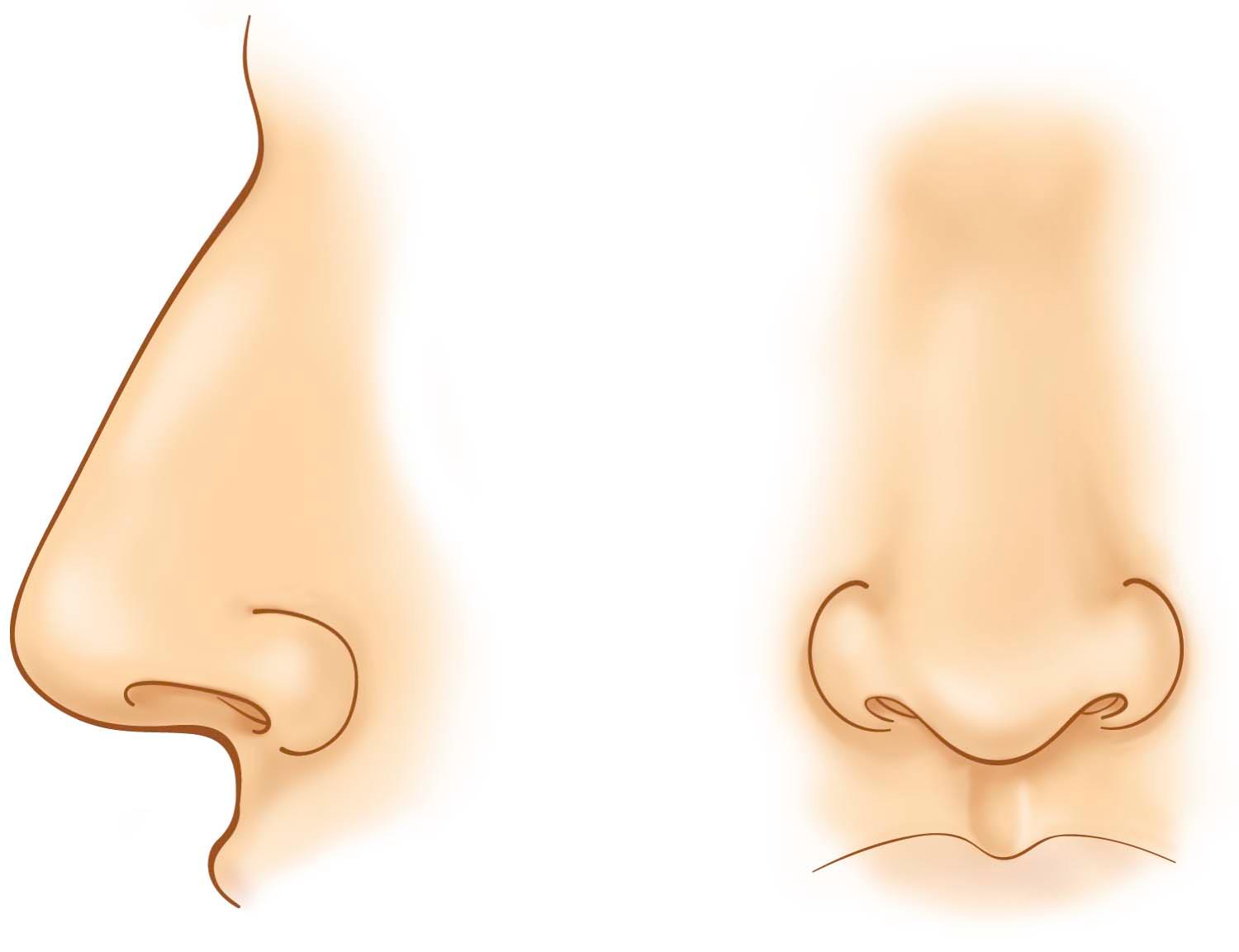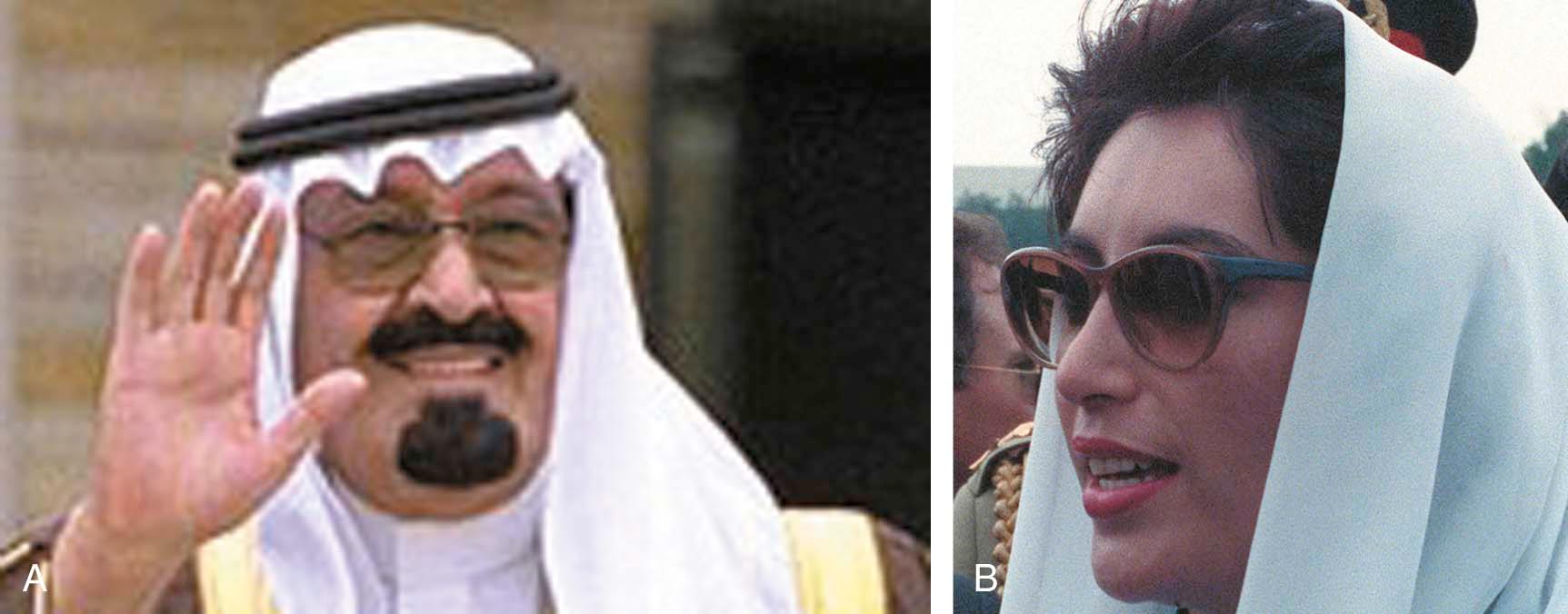Physical Address
304 North Cardinal St.
Dorchester Center, MA 02124
Aesthetic rhinoplasty in patients of Middle Eastern extraction poses a specific set of challenges for the rhinoplasty surgeon. As is true in other geoethnic groups, several unique anatomic features define the appearance of the “Middle Eastern nose” and require a tailored approach to achieve aesthetic refinement. Implicit in the surgical methodology for this group is the prevention of “Westernization rhinoplasty” and preservation of the native ethnic look (the word “ethnic” is used loosely throughout text and refers to all ethnicities of the Middle East). Middle Eastern rhinoplasty also highlights the fundamental surgical tenets of cartilage sparing and structural grafting. These are particularly applicable to this group of patients, who consistently demonstrate inherent cartilaginous weakness as well as thick overlying nasal skin. This chapter explores the common nasal characteristics shared by people of the Middle Eastern origin and reviews the essential elements of a rhinoplasty consultation. Various surgical techniques that have been found effective by authors in the aesthetic refinement of the Middle Eastern nose are discussed in detail.
While the term “Middle East” refers to a geographic region, its precise borders have been poorly defined and blurred over the centuries by migration and intermixing of various populations. The phrase “Middle East” has its origins in the United Kingdom at the turn of the twentieth century and refers to regions of Western Asia and North Africa. Numerous modern nations presently comprise this subcontinent and are home to almost a billion people ( Table 31-1 ). Some historians argue that several large adjacent countries, such as Armenia, Afghanistan, Pakistan, and India, also belong in the Middle Eastern category. While this discussion is beyond the scope of the present chapter, it is not surprising that people inhabiting these neighboring countries certainly share many of the nasal characteristics reviewed in detail here.
| Country | Population | Country | Population |
|---|---|---|---|
| Algeria | 32,930,091 | Oman | 3,102,229 |
| Bahrain | 698,585 | Palestine | 3,889,248 |
| Egypt | 78,887,007 | Qatar | 885,359 |
| Iran | 68,688,433 | Saudi Arabia | 27,019,731 |
| Iraq | 26,783,383 | Sudan | 41,236,378 |
| Israel | 7,260,000 | Syria | 18,881,361 |
| Jordan | 5,153,378 | Tunisia | 10,175,014 |
| Kuwait | 2,418,393 | Turkey | 70,413,958 |
| Lebanon | 3,874,050 | UAE | 2,602,713 |
| Libya | 5,900,754 | Yemen | 21,456,188 |
| Morocco | 33,241,259 | Total | 465,263,512 |
The Middle East is also home to a wide range of ethnic and religious diversity. This may partially explain variations in the aesthetic desires for rhinoplasty between various geographic areas within Middle East. For instance, it has been suggested that people living outside of the Arabian Peninsula and Gulf regions (Saudi Arabia, Kuwait, Qatar, UAE, Oman, and Iran) desire more significant changes from rhinoplasty, such as greater dorsal reduction and tip projection.
In the United States, the estimated size of the Middle Eastern diaspora varies according to the source, but nevertheless provides a sense of its demographic impact. According to a recent population census, more than 1.2 million people of strictly Middle Eastern origins reside in United States. This number expands to “at least 3.5 million” as per the Arab American Institute. While the residence of this ethnic group has been documented in all 50 states, an overwhelming 94% reside in large metropolitan areas (Los Angeles, Detroit, and New York are the top three cities).
Several unique features define the ethnic appearance of a Middle Eastern nose ( Table 31-2 , Figure 31-1 ). These can be readily appreciated in some of the well-known political figures from the Middle East ( Figure 31-2 ).
| Skin–soft tissue envelope | Thick skin with numerous pilosebaceous units, contributing to an amorphous appearance of the nasal tip and supratip fullness. |
| Upper third | Overprojecting bony dorsum and high radix; excessive and sometimes irregular dorsal width resulting in poor brow-tip dorsal aesthetic line. |
| Middle third | Widening of the osseous and cartilaginous vaults. |
| Nasal tip | Amorphous and hanging nasal tip, cephalic orientation of the lower lateral crura, weak medial crura, acute nasolabial angle. |
| Nostrils | Variable degree of alar flaring. |


One of the chief distinguishing characteristics of a Middle Eastern nose is its relatively thick overlying skin–soft tissue envelope (SSTE). Numerous pilosebaceous units dotting its surface produce an oily texture and further contribute to skin thickness. These anatomic properties of SSTE significantly influence the appearance of the lower third of the nose by effectively blunting the configuration of the underlying cartilaginous framework. Specific findings include an effacement of the supratip region and concealment of tip definition. This results in an overall amorphous appearance of the nasal tip. In the postoperative period, the above-mentioned features of SSTE promote scarring, which in turn predisposes to contracture forces and formation of a pollybeak deformity. Both of these can be controlled with specific surgical maneuvers and steroid injections respectively, as outlined in sections that follow.
High radix and a strong dorsum, with an associated dorsal hump, commonly frame the upper two thirds of a Middle Eastern nose. This visual feature is almost always accentuated by the underprojected and hanging nasal tip, thereby enhancing an illusion of increased dorsal height. As such, elevating tip position goes a long way in visually reducing the dorsum. Moreover, establishing an improved nasal harmony by elevating the tip avoids an overresection of the nasal dorsum.
Weak structural integrity of the lower lateral cartilages represents an additional defining property of the nasal tip. Medial crura are typically thin and contribute minimal support to the tip. The lateral crura are commonly rotated in a cephalic orientation and variably contribute to tip fullness. Overactive depressor septi nasi muscle and alar flaring are also frequently seen, especially in people from the West African regions of the Middle East.
Become a Clinical Tree membership for Full access and enjoy Unlimited articles
If you are a member. Log in here